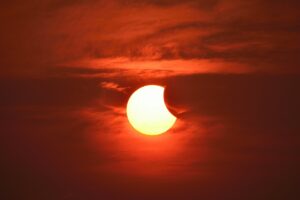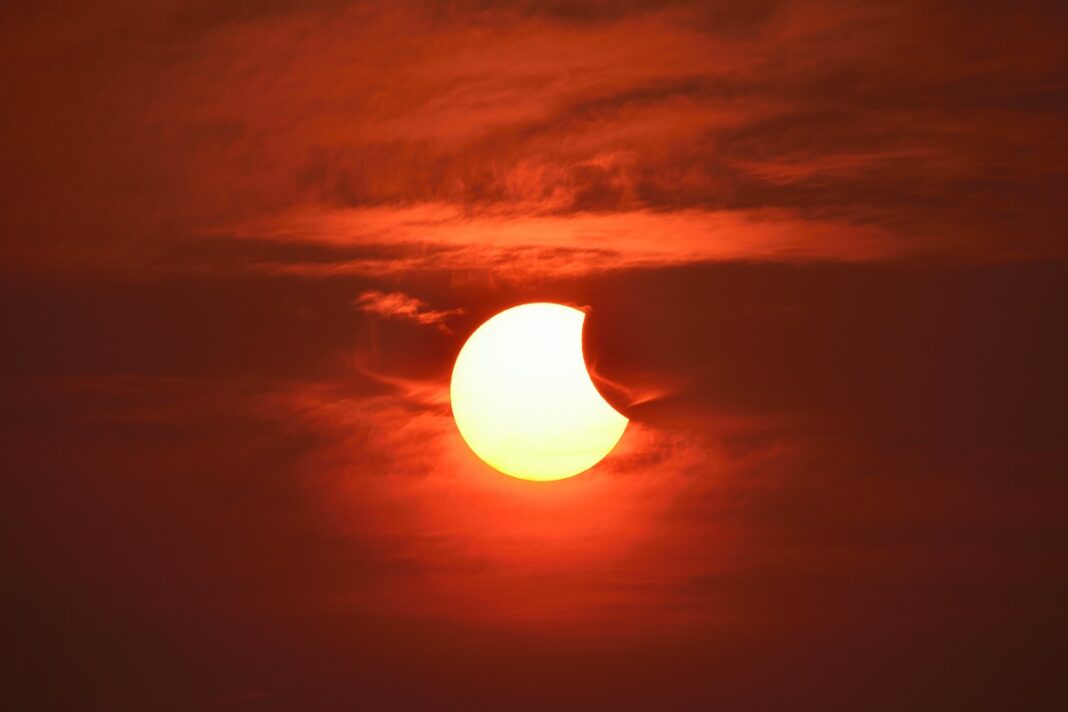According to Astronomer Dr. Javed Iqbal, who was quoted by ARY News, people would be able to see the second and last partial solar eclipse of 2022 on October 25, 2022. According to Dr. Javed, the eclipse would peak at 5:01 PM and last from 3:57 PM to 5:56 PM.
Just before sunset, take note that it will be visible all around the nation. Nearly two hours would pass during the solar eclipse. North Eastern Africa, Pakistan, Europe, and Asia would all be able to see the eclipse. The first solar eclipse of 2022 was seen at midnight between April 30 and May 1, but it was not visible in Pakistan. Southern South America, some of Antarctica, and the Pacific and Atlantic Oceans all witnessed this partial solar eclipse.
🔴 Partial Solar eclipse will be seen in #Karachi, #Lahore and across whole Pakistan on 25th October 2022.
Start Time: 3:57 PM
Peak Time: 5:01 PM
End Time: 5:56 PM pic.twitter.com/Z0bKN0HE6z— PakWeather.com (@Pak_Weather) September 21, 2022
On April 20, 2023, a solar eclipse would occur, however, it wouldn’t be visible in Pakistan. A solar eclipse occurs when the Moon passes between the Sun and Earth at precisely the appropriate time, throwing its shadow on the Sun. Earlier this year, there will be a partial solar eclipse at midnight between April 30 and May 1, 2022. (PST). The Pakistan Meteorological Department reports that Pakistan will not be able to see this first solar eclipse in 2022. The southern regions of South America, some of Antarctica, and the Pacific and Atlantic Oceans will all be able to see this partial solar eclipse.

The Maximum Solar Eclipse will occur at 01:42 PST on May 1, 2022, and the Partial Solar Eclipse will terminate at 03:38 PST on April 30, 2022. (01st May 2022). On December 4, 2021, the final solar eclipse of the year was likewise not visible in Pakistan. South Australia, South Africa, South America, the Atlantic area, the Indian Ocean, and Antarctica all witnessed the solar eclipse. The entire celestial show was seen in the area around Antarctica. A narrow ring of the solar disc is visible during an annular eclipse because the Moon, which is passing between Earth and the Sun, is not quite close enough to our planet to block out the sunlight. When the Moon passes through Earth’s shadow, a solar eclipse always happens two weeks either before or after a lunar eclipse. Approximately half of the surface of the Earth can see lunar eclipses.
- Misleading Video Alters Prime Minister Shehbaz’s Speech Targeting Political Rival, Not His Party - 21/04/2024
- ATC Grants Three-Day Remand for Suspects in Ichhra Bazaar Harassment Case - 19/03/2024
- Pakistan, India, and Bangladesh Lead World in Severe Smog Crisis, Exceeding WHO Guidelines - 19/03/2024


